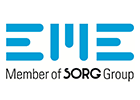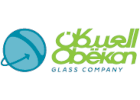O-I Glass has allocated funding to a number of environmental projects from its Green Bond scheme.
As of this month €255.6 million had been allocated to its Eligible Green Projects.
Andres Lopez, Chief Executive Officer for O-I, said: “This Green Bond represents our ongoing commitment to find and execute innovative strategies to elevate our sustainability ambitions.”
The allocation includes investments in purchasing recycled glass (cullet) to further improve the environmental footprint of O-I’s products and production.
The purchase of cullet qualifies as an Eligible Green Project as it supports the circular economy through building demand for post-consumer recycled gass and increasing recycled content in new glass packaging.
O-I appointed its first Chief Sustainability Officer, Randolph Burns, who reports directly to the CEO.
The company is working to improve the US glass recycling system, building on the successful model in Europe where glass recycling outpaces all other packaging materials
It has also initiated a glass advocacy campaign initially focused in the US.
“This effort will ensure to rebalance the public discussion on social and traditional media with regards to the inherent sustainable nature of glass as well as emphasizing the many benefits of our product including the healthy, premium and brand building characteristics of glass,” said Lopez.
Initiatives
Other sustainability initiatives the company is currently pursuing include the process of converting seven North American plants to LED lighting and the use of Oxy-Fuel to increase furnace efficiencies.
The shift to LED lighting at the Muskogee, Auburn, Windsor, Waco, Winston-Salem, Lapel and Brampton facilities reduces energy consumption associated with production—further contributing to decarbonisation.The expected energy savings in Windsor, alone, is the equivalent to saving three million pounds of carbon per year—or the equivalent of removing 300 cars from the road.
To advance energy reduction, O-I is also investing in the use of oxy-fuel for furnaces, which uses purified oxygen, rather than air, during combustion.
This shift reduces energy input while minimising gas flow and emissions. Most recently, facilities in Villotta, Italy and Jarvakandi, Estonia have incorporated Oxy-Fuel, achieving the lowest CO2 intensities per ton in the O-I network.
O-I’s MAGMA technology also advances the sustainability of glass manufacturing by, among other things, increasing flexibility with on-off technology, reparability, potential co-location or near-location possibilities and light weighting.

























